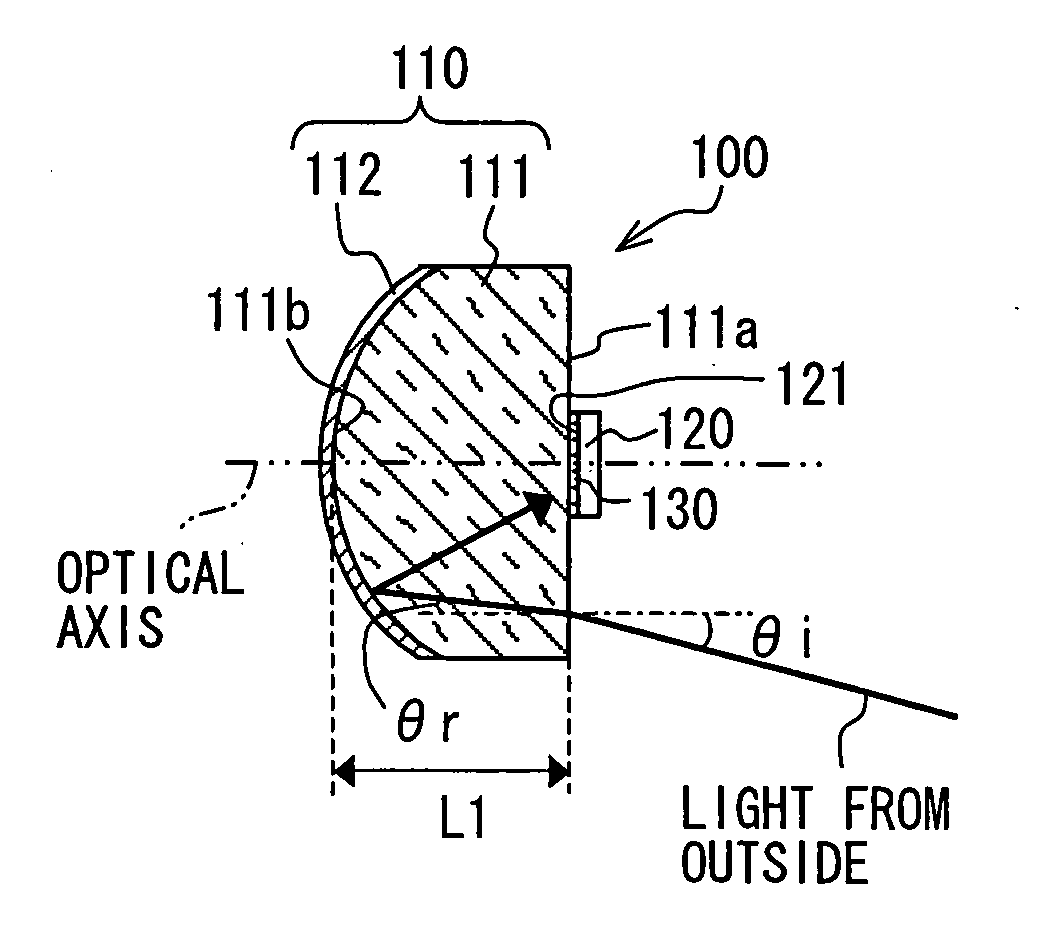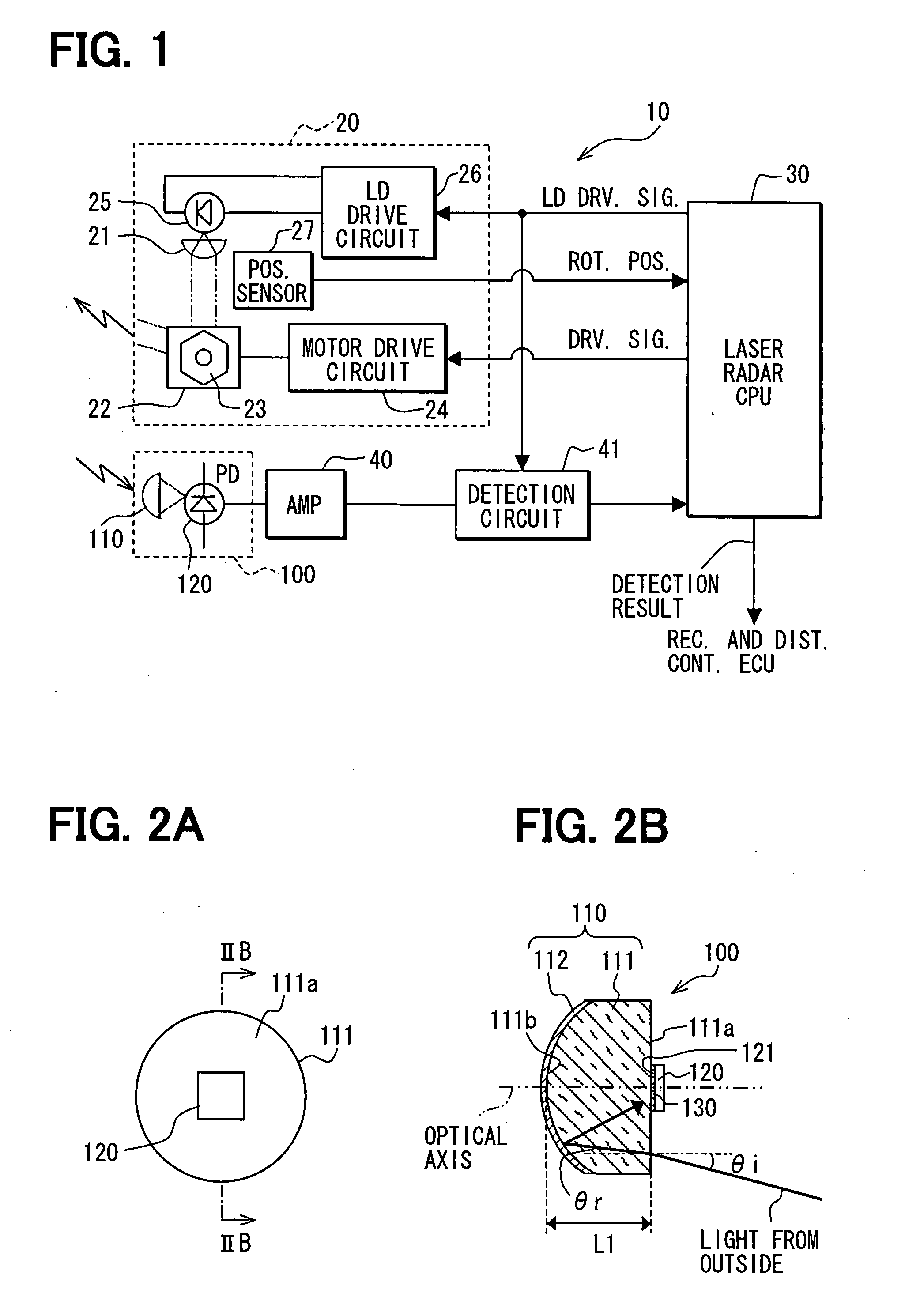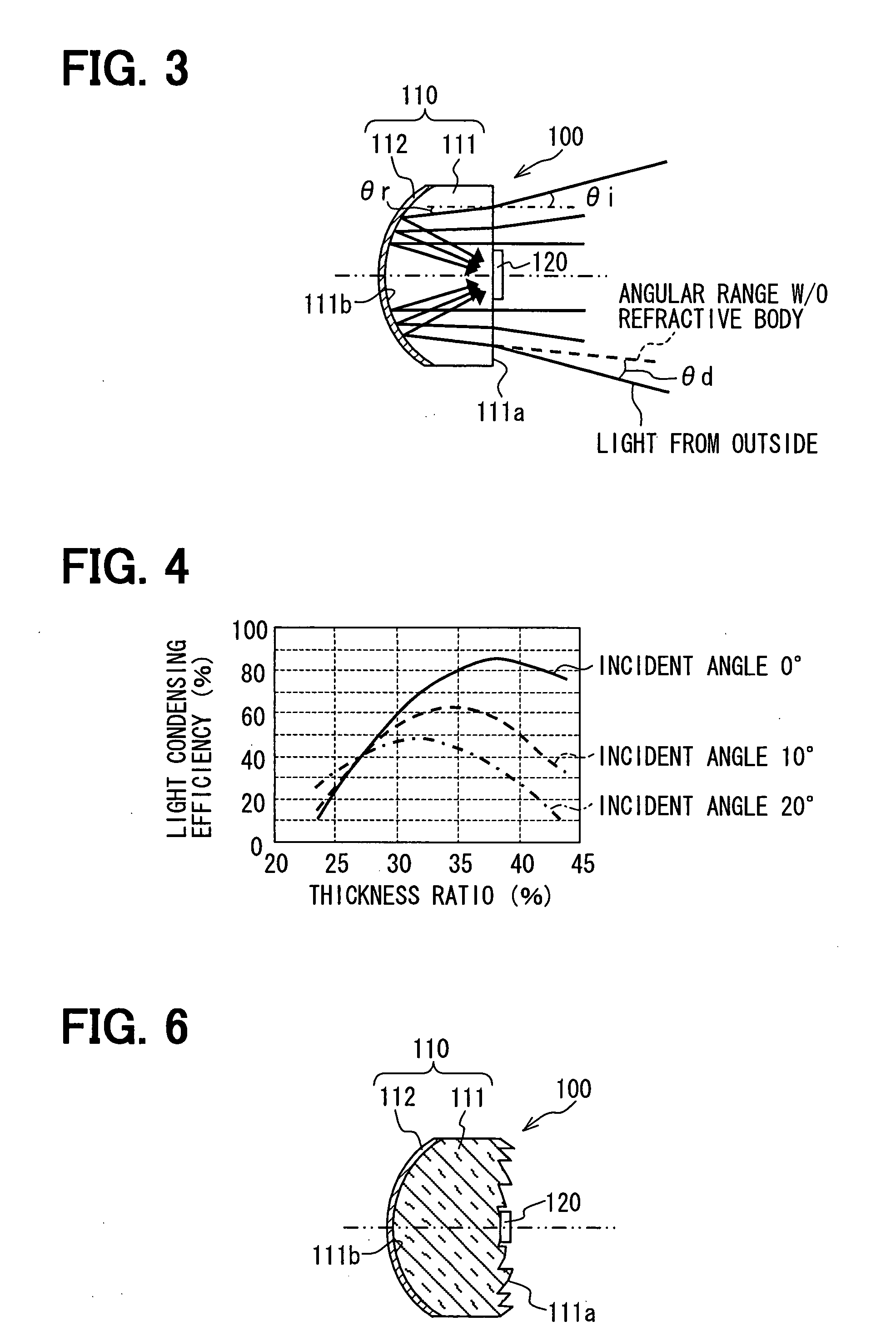Radar apparatus and optical receiver thereof
a technology of optical receiver and receiver body, which is applied in the field of radar, can solve the problems of raising the sensitive element, and increasing the physical size of the light receiving optical system (radar apparatus), so as to achieve the effect of enabling the detection of a wider angle range without increasing the volume of the receiver body and increasing reliability
- Summary
- Abstract
- Description
- Claims
- Application Information
AI Technical Summary
Benefits of technology
Problems solved by technology
Method used
Image
Examples
first embodiment
[0031]First, description will be given to the general configuration of a laser radar sensor to which an optical receiver in a first embodiment is applied. FIG. 1 is a general block diagram illustrating an example of the laser radar sensor. The invention is characterized in the configuration of the optical receiver. The radar device (not shown) including the laser radar sensor is described, for example, in JP-A-2005-257405, filed by the present applicants, and the like. Therefore, the detailed description of the radar device is omitted. The following description takes as an example a case where the radar device is used as a radar device for vehicles. However, the radar device according to the invention is not limited to those for vehicles, and can be used to detect any intruder into a specific area.
[0032]As illustrated in FIG. 1, the laser radar sensor 10 is constructed of the following as principal parts: a light sender 20 that projects laser light; an optical, receiver 100 that rec...
second embodiment
[0049]Description will be given to a second embodiment of the invention with reference to FIG. 7. FIG. 7 is a sectional view illustrating the general configuration of an optical receiver 100 in a second embodiment of the invention, and it corresponds to FIG. 2B referred to in relation to the first embodiment. In FIG. 7, the adhesive 130 is omitted.
[0050]As illustrated in FIG. 7, this embodiment is characterized in that the opposite face 111b of the refractive body 111 is constructed as a paraboloid and the concave mirror 112 is constructed as a parabolic mirror 112. More specific description will be given. The light-sensitive element 120 having the rectangular light receiving surface 121 is fixed in a position overlapping the optical axis on the incidence surface 111a between the parabolic mirror 112 and its focal point.
[0051]When this construction is adopted, the same phenomenon as with the spherical surface mirror described in relation to the first embodiment takes place. As illus...
third embodiment
[0058]Description will be given to a third embodiment of the invention with reference to FIG. 9. FIG. 9 is a sectional view illustrating the general configuration of an optical receiver 100 in the third embodiment of the invention, and it corresponds to FIG. 2B referred to in relation to the first embodiment. In FIG. 9, the adhesive 130 is omitted.
[0059]As illustrated in FIG. 9, this embodiment is characterized in that: the opposite face 111b of the refractive body 111 is constructed as an ellipsoid (eccentric ellipsoid in which the mirror surface intersects its minor axis in FIG. 9); and the concave mirror 112 is constructed as an ellipsoidal mirror 112. The light-sensitive element 120 having the rectangular light receiving surface 121 is fixed in a position overlapping the optical axis on the incidence surface 111a.
[0060]When this construction is adopted, the same phenomenon as with the spherical surface mirror described in relation to the first embodiment takes place. As illustr...
PUM
| Property | Measurement | Unit |
|---|---|---|
| refractive index | aaaaa | aaaaa |
| diameter | aaaaa | aaaaa |
| incident angle | aaaaa | aaaaa |
Abstract
Description
Claims
Application Information
 Login to View More
Login to View More - R&D
- Intellectual Property
- Life Sciences
- Materials
- Tech Scout
- Unparalleled Data Quality
- Higher Quality Content
- 60% Fewer Hallucinations
Browse by: Latest US Patents, China's latest patents, Technical Efficacy Thesaurus, Application Domain, Technology Topic, Popular Technical Reports.
© 2025 PatSnap. All rights reserved.Legal|Privacy policy|Modern Slavery Act Transparency Statement|Sitemap|About US| Contact US: help@patsnap.com



